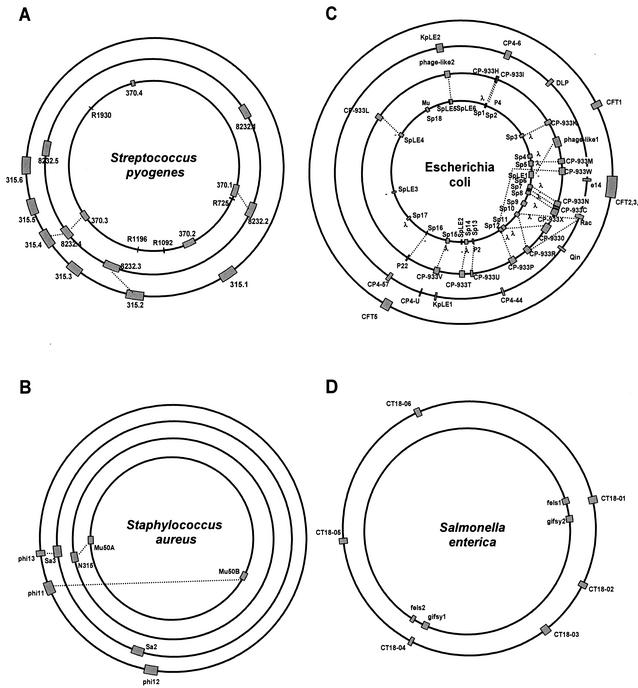FIG. 1.
Prophage content of four human bacterial pathogens. The prophages are indicated as shaded boxes on the bacterial genome maps. The lengths of the boxes correspond to the relative sizes of the prophage DNA with respect to the bacterial chromosome. Note that the circumference of the bacterial genomes does not correspond to their relative length. Prophages with extensive DNA sequence identity are linked by dotted lines. (A) S. pyogenes genomes of the sequenced M1, M18, and M3 strains (from center to periphery). (B) S. aureus genomes of the sequenced Mu50 (center), N315, MW2, and 8325 strains. (C) E. coli genomes from the O157:H7 Sakai (center) and O157:H7 EDL933 strains, the laboratory strain K-12, and the uropathogenic strain CFT073. (D) S. enterica serovar Typhimurium LT2 (center) and serovar Typhi CT18.

